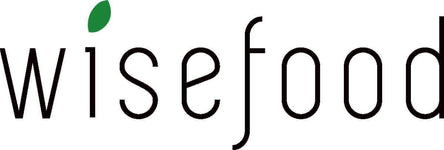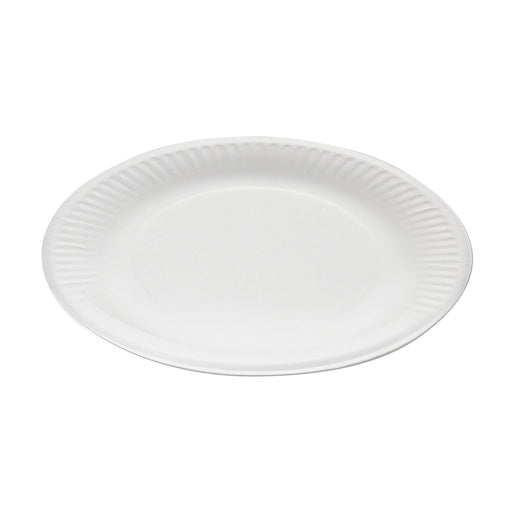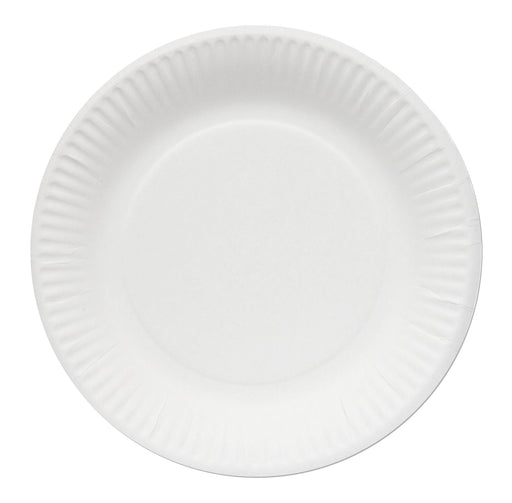Worth knowing about cellulose
Sustainable materials that are used as an alternative to plastic in the packaging sector are very often based on cellulose: wooden cutlery, palm leaf shells or straws made from wheat straw are made directly from natural materials rich in cellulose, plates and cups made of cardboard go through a somewhat more complex manufacturing process, but are ultimately also based on wood . Shopping bags and twine made of cotton, jute or raffia are practically pure vegetable cellulose fibers. Finally, the transparent, crackling cellophane film is created by chemical conversion of a pulp of cellulose fibers.
But what exactly is cellulose, where does it come from - and what makes cellulose-based materials such a sustainable alternative not only for petroleum-based plastics but also for other organic packaging?
1. What is cellulose?
1.1 From algae to stone pine: the building material of all plants
Cellulose is the most important component of plant biomass and is by far the most common biomolecule in the world. All plants, from the tiny single-celled algae to the imposing Swiss stone pine, have cellulose cell walls. The cellulose macromolecules give the shell of each individual plant cell shape and strength - and form long fibers, with the help of which even large structures such as stalks and branches achieve their stable cohesion (the wood pulp lignin also contributes to the strength of wood).
1.2 Wood, paper and more: Which materials are made of cellulose?
Cellulose from various natural sources has accompanied human culture as a raw material since its earliest beginnings. Paper, cardboard and ancient papyrus are rich in cellulose, as are natural fibers such as cotton, flax, jute, hemp and raffia, as well as plant-based building materials and auxiliary materials such as wood, bamboo, reed, straw and palm leaves.
Today, chemically and physically modified cellulose can also be found in many materials: for example in the synthetic fibers viscose and lyocell, in the plastics celluloid and cellophane or in various thickeners, stabilizers or coatings in the food, pharmaceutical and cosmetics industries.
2. What is cellulose made of?
Cellulose is made up of nothing more than sugar: each cellulose molecule is a long, unbranched chain of glucose molecules. Typically, a cellulose molecule contains several thousand glucose units.
2.1 Digestion of cellulose - why we cannot feed on cellulose
Although cellulose is made up of glucose molecules just like starch (the carbohydrate in flour), these are connected differently in the cellulose molecule than in the starch molecule. This small but enormously far-reaching difference makes cellulose completely inedible for us - and likewise for almost all other animal species with the exception of some termites and snails: We have no digestive enzyme that could break down cellulose into its sugar molecules. Therefore, grass or leaves are not carbohydrate sources for us. (But salad is still - or maybe because of it - healthy!)
Ruminants can use cellulose with the help of the cellulose-splitting microorganisms that live in their digestive system. And for us, cellulose is an important dietary fiber that makes our intestinal flora happy.
3. Cellulose manufacture
The good thing about cellulose: It is produced by plants - completely environmentally neutral! We can often use cellulose-containing materials in their practically unchanged natural form. The most important example here is of course wood, which can be used directly as building and construction wood, for furniture and many other purposes. Cotton is almost as important for mankind - the harvested fibers can be spun directly into yarn after manual cleaning. But the cultures in which these raw materials are common also have a fantastic range of possible uses for straw and reed - historically, for example, for covering roofs and very recently as a sustainable and highly functional insulating material - for bamboo canes or palm leaves.
Other materials are obtained by processing plant raw materials. These methods include cooking or steaming wood chips, or controlled rotting (also called dew or field roasting) of hemp, flax, or jute stalks to separate cellulosic fibers from the other components of the plant.
3.1 Industrial production of cellulose from wood
Industrially produced pure or almost pure cellulose is called pulp. The starting material is usually wood, other raw materials such as straw or leftovers from cotton production are used to a lesser extent. In pulping from wood chips, the chips are cooked in a solution containing chemicals designed to separate the cellulose fibers from the other components of the wood (primarily the lignin). Depending on the chemicals used, a distinction is made between sulphate processes (sodium sulphate is added, known as Glauber's salt) and sulfite processes (here the fibers are broken down by sulfite compounds, eg calcium hydrogen sulfite or magnesium bisulfite). The vast majority of pulp world production (about 95%) is produced using the sulphate process.
Pulp is primarily used as a raw material for the production of paper and cardboard, but also as a starting material for the production of viscose fibers. Global pulp production is around 180 million tons annually.
4. Enormous importance of cellulose as a renewable raw material in the circular economy
Cellulose is stored solar energy and bound carbon dioxide. Through photosynthesis (the conversion of carbon dioxide and water into sugar and oxygen driven by light energy), the plant world binds around 200 billion tons of carbon dioxide every year and ultimately produces around 1.5 trillion tons of cellulose from the resulting sugars.
With the increasing interest in sustainable management, the importance of cellulose has also increased again: Materials rich in cellulose not only have many practical properties and a high energy content - cellulose also has what it takes to be the number one renewable raw material in a circular economy with which humanity can counteract climate change.
Research on innovative cellulose-based materials is constantly opening up new fields of application for the natural substance. From the fuel cellulosic ethanol to the lightweight composite material Purcell, from the more environmentally friendly alternative to viscose Lyocell to the high-tech material nanocellulose – we will definitely be hearing a lot more about cellulose in the future.
4.1 Materials containing cellulose are often easily recyclable
The blue paper bin has become indispensable in our yards - and demonstrates the good recycling balance of paper and cardboard: Recycled paper now achieves a quality that is practically no longer inferior to paper made from fresh fibre. 78% of German paper consumption was recycled in 2019, and exactly the same percentage describes the use of waste paper in the German paper industry. In other words, paper recycling works great here and now - while we still face many practical problems with plastic recycling.
Waste wood can be recycled into chipboard – but the balance here is currently less impressive: only 20% of the waste wood produced in Germany is materially recycled; the rest is burned. However, from a climate point of view there are far fewer objections to using waste wood as a source of energy or heat than to burning fossil fuels.
The recycling of cellulosic fibers such as cotton, on the other hand, is still in its infancy. German researchers have just succeeded in producing high-quality viscose fibers from old cotton clothing. It is to be hoped that these early days will result in a thriving recycling industry that will finally make fast fashion products accessible for real reuse.
4.2 ... and always compostable!
But even if recycling is not possible or cannot take place for economic reasons: Materials rich in cellulose are not a waste management problem child, as they are ultimately broken down by microorganisms into valuable humus, carbon dioxide and mineral compounds.
Chemically unchanged cellulose, such as that found in paper, cardboard, wood or bamboo waste, cotton, jute, flax or bast fibers, can be composted without any problems. And even chemically modified cellulose is no hurdle for hungry compost organisms: the cellulose-based plastic cellophane is broken down just as easily as viscose or lyocell fibers.
🧃 Sustainable party plates
👍 Suitable for birthdays, barbecues and other events
🥇 Paper plates that can be used in a variety of ways
❤️ For the sake of the environment
😊 Can be disposed of in waste paper
💪 Ø 23cm white paper plates
Original price
€8,99
Original price
from €8,99
€7,55
€8,99
Current price
€8,99
300 item | €0,08 / item
Our sustainable disposable cardboard plates are the perfect alternative to plastic tableware.
Thanks to the water-based coating, which was produced...
View full details
5. What sustainable single-use products are made from cellulose?
Cellulosic disposable products include
- Wooden cutlery and crockery
- Cutlery and crockery made of pure bamboo (not to be confused with the less sustainable plastics containing bamboo fibre)
- Wheat Straw Straws
- Tableware made from pressed palm leaves
- Tableware made from sugar cane pulp
- Crockery made from wheat bran
- transparent bags and packaging films made of cellophane
- and of course the classic paper plates, sausage boxes and paper cups
5.1 Sustainability performance of cellulose compared to other environmentally conscious packaging materials Compared to bioplastics made from polylactic acid (PLA), cellulose-based disposable products have the great advantage that they can be easily composted, provided the crockery is not coated or soaked in plastic resin. The more natural the products are, the less energy-intensive their production is compared to that of bioplastics. However, the water, chemical and energy-intensive production of paper from fresh wood is also not ecologically harmless - recycling is all the more important here.
The comparison of cellulose-based disposable products with edible packaging is also quite favourable: the former are usually made from raw materials that are unsuitable for use as food (wood, palm leaves) or are produced as waste during the production of food (sugar cane pulp, wheat bran). This means that their production is not in questionable competition with the production of real food, but is even suitable for intensifying the use of grain or sugar cane in a meaningful way.








